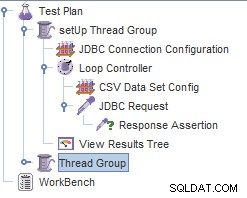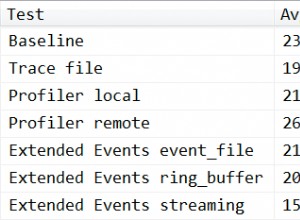Verwenden Sie diese Funktion
CREATE FUNCTION dbo.DictanceKM(@lat1 FLOAT, @lat2 FLOAT, @lon1 FLOAT, @lon2 FLOAT)
RETURNS FLOAT
AS
BEGIN
RETURN ACOS(SIN(PI()*@lat1/180.0)*SIN(PI()*@lat2/180.0)+COS(PI()*@lat1/180.0)*COS(PI()*@lat2/180.0)*COS(PI()*@lon2/180.0-PI()*@lon1/180.0))*6371
END
Sie können mit dieser Funktion bestellen, ABER bei großen Datensätzen wird es sehr langsam sein, also versuchen Sie, den Datensatz vorzufiltern
UPD:
Verwendung der Testdaten von @chopikadze:
declare @lat float, @lng float
select @lat = 41.0186, @lng = 28.964701
declare @Location table(Latitude float, Longtitude float, Name nvarchar(50))
insert into @Location(Latitude, Longtitude, Name) values (41.0200500000, 40.5234490000, 'a')
insert into @Location(Latitude, Longtitude, Name) values (41.0185714000, 37.0975924000, 'b')
insert into @Location(Latitude, Longtitude, Name) values (41.0184913000, 34.0373739000, 'c')
insert into @Location(Latitude, Longtitude, Name) values (41.0166667000, 39.5833333000, 'd')
insert into @Location(Latitude, Longtitude, Name) values (41.0166667000, 28.9333333000, 'e')
SELECT ABS(dbo.DictanceKM(@lat, Latitude, @lng, Longtitude)) DistanceKm, * FROM @Location
ORDER BY ABS(dbo.DictanceKM(@lat, Latitude, @lng, Longtitude))
Angenommen, die Erde ist KEIN Geoid, sondern die runde Kugel, wenn Sie eine unter 1 m genaue Formel brauchen - ich kann sie finden, habe sie nicht bei mir




